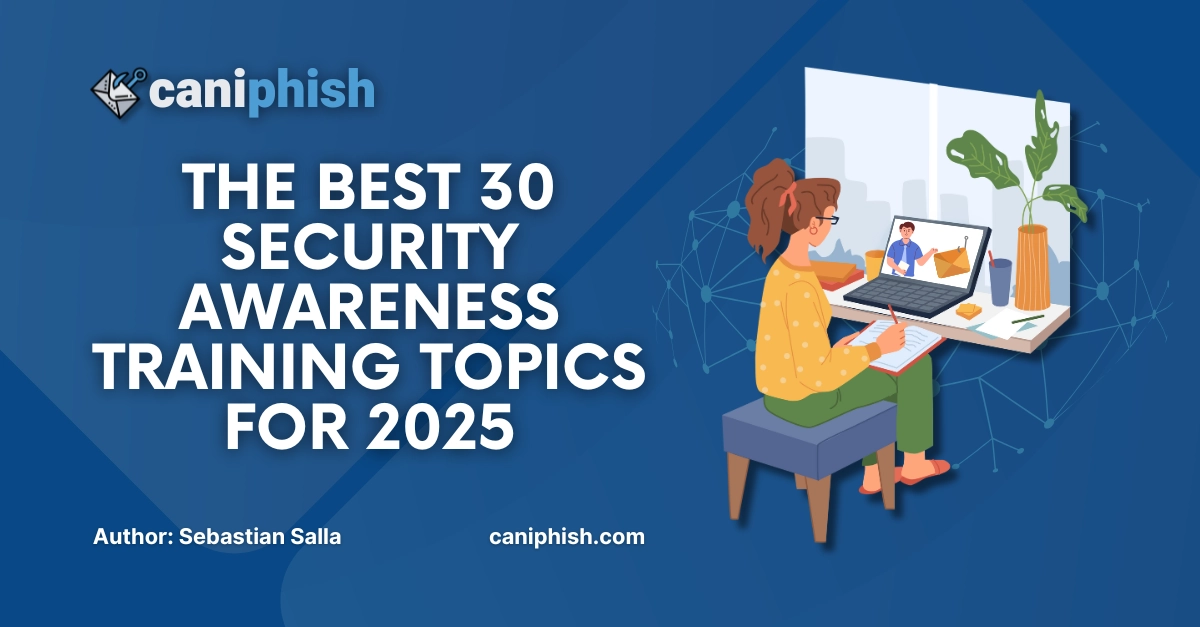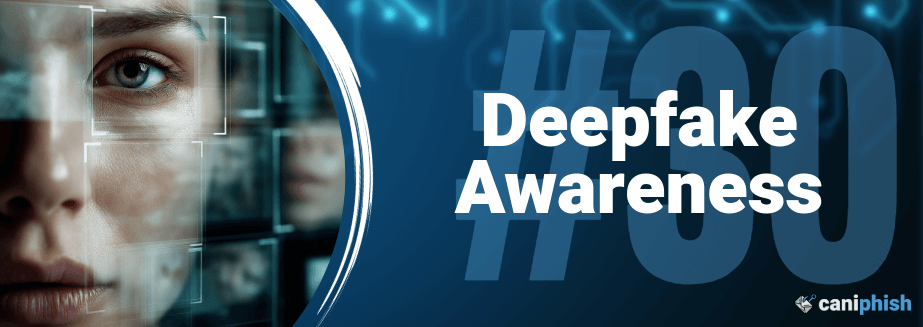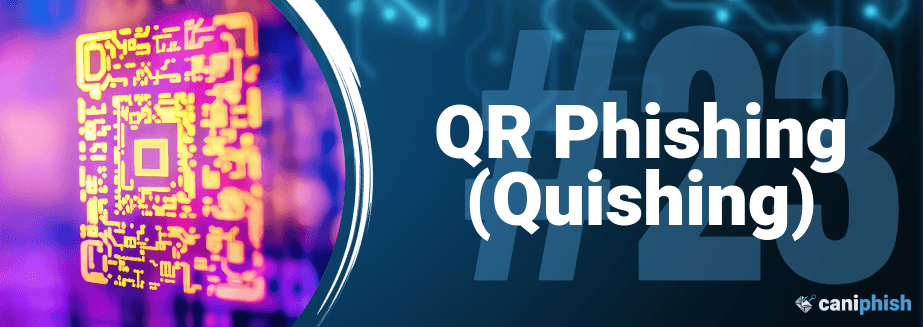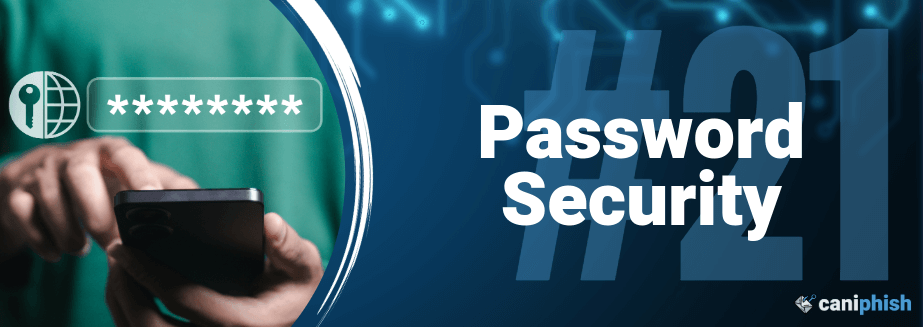30 Security Awareness Training Topics For 2025

- #30 Deepfake Awareness Training
- #29 Supply Chain Risk Training
- #28 Threat Actor Awareness Training
- #27 AI Scam Awareness Training
- #26 Impersonation Scam Awareness Training
- #25 Secure Traveling Training
- #24 Shadow IT Training
- #23 Quishing (QR Phishing) Awareness Training
- #22 WiFi Security Training
- #21 Password Security Training
- #20 Small Business Best Practices
- #19 Defense In Depth
- #18 Smishing (SMS Phishing)
- #17 Vishing (Voice Phishing)
- #16 Social Media Scam Training
- #15 Web 3.0 & Blockchain
- #14 Secure Credit Card Handling
- #13 Privacy Awareness
- #12 Secure Software Development
- #11 Artificial Intelligence
- #10 Insider Threat
- #9 Situational Awareness
- #8 Device Security
- #7 Remote Working
- #6 Physical Security
- #5 Multi-Factor Authentication
- #4 Secure Internet Browsing
- #3 Cyber Security Awareness
- #2 Ransomware Awareness
- #1 Phishing Awareness
- Conclusion
- Frequently Asked Questions
Are you looking for some great security awareness training topics to train your employees and secure your organization? The following 30 topics have been curated based on their popularity, applicability to the average employee, and difficulty.
Each training addresses a unique topic as it relates to a cybersecurity domain, industry-specific best practice, or compliance framework. With this in mind, let's take a look at the most popular topics in 2025!
Jump To The #1 Security Awareness Training Topic Of 2025#30 Deepfake Awareness Training

Deepfakes are no longer science fiction, they’re part of our digital reality. Using AI, deepfakes can mimic a person’s face, voice, or full appearance with startling accuracy, making it harder than ever to tell what’s real.
While the technology has legitimate uses in entertainment and education, it also opens the door to sophisticated scams and impersonation attacks.
Deepfakes are already being used to spread misinformation, impersonate executives, and trick people into handing over sensitive data or money.
This training strengthens your ability to detect deepfake threats and respond effectively.
Here’s what it covers:
- What is a deepfake? Learn about deepfakes, AI-generated audio, video, or images designed to convincingly impersonate someone. From fake video calls to synthetic voice messages, deepfakes can manipulate what you see and hear in ways that feel entirely real.
- How are deepfakes used in cybercrime? Understand how scammers use deepfakes to impersonate executives, coworkers, or public figures to commit fraud, spread false information, or manipulate events.
- Why are deepfakes dangerous? Explore the growing risk of real-time deepfake impersonation during video calls, voice messages, and meetings.
- How can you protect yourself? Discover how to stay safe by questioning unusual requests, especially those involving money, access, or sensitive information.
#29 Supply Chain Risk Training

Cybersecurity isn't just about protecting your own systems, it’s also about the businesses you rely on. From delivery services and software providers to maintenance contractors and payment platforms, your supply chain can open doors to threats you didn’t expect.
Cybercriminals exploit trusted third-party relationships to sneak in unnoticed. A compromised vendor, fake email from a supplier, or a tampered software update can become the backdoor into your organization. These threats often feel legitimate, which makes them easy to miss and dangerous to ignore.
This training strengthens your ability to detect and respond to supply chain threats before they impact your business. Here is what it covers:
- What is supply chain risk? Understand how third-party services and vendors can introduce cybersecurity vulnerabilities, even when your own systems are secure.
- How supply chain attacks happen? Learn how attackers exploit trusted relationships, such as fake invoices, poisoned updates or vendor impersonation, to bypass your defenses.
- How to spot warning signs? Gain insight into key red flags like strange software behavior, sudden vendor communication changes or unusual activity after updates or equipment installs.
- How to reduce supply chain risk? Discover best practices like vetting vendors, using trusted sources for updates and staying informed about your suppliers’ security posture.
#28 Threat Actor Awareness Training

Threat actors are the driving force behind cyberattacks. Whether human or automated, their goal is the same, cause harm, steal data, or disrupt systems.
They come in many forms, from organised cybercriminals chasing profit to nation-state hackers pursuing espionage. Some act out of ideology, revenge, or even boredom.
In this training, learners will explore the world of threat actors. Here’s what they will learn:
- What is a threat actor? Explore how cyber threats start with someone, or something, intentionally causing harm online. From human hackers to automated bots, threat actors drive attacks by targeting data, systems, and trust.
- What are the main types of threat actors? Discover the different types of threat actors, from nation-state spies and financially driven cybercriminals to politically motivated hacktivists, insider threats, amateur script kiddies, and the rare competitor saboteurs.
- What motivates them? Gain insight into what drives threat actors, criminals seek profit, nation-states spy, activists want attention, insiders act out of anger or negligence, and some just want bragging rights. Motives shape how they attack.
- How can you detect and defend against them? Learn how to spot and stop threat actors by watching for unusual behavior, verifying suspicious requests, keeping systems updated, managing access, and reporting issues early.
#27 AI Scam Awareness Training

AI scams are one of the fastest-growing threats in cybersecurity. Criminals are now using artificial intelligence to create fake voices, deepfake videos and highly personalised phishing messages that are difficult to detect.
Whether it is a voicemail that sounds like a loved one or an email that feels too perfect to question, AI makes deception easier and more convincing than ever. The goal is to get you to trust something fake and act on it quickly.
This training strengthens your ability to spot and respond to AI-powered scams as they continue to evolve. Here is what it covers:
- What is an AI scam? Learn how cybercriminals are using artificial intelligence to create realistic scams, including fake voices, deepfake videos, and sophisticated phishing emails that appear completely legitimate.
- Why AI scams are so effective? Understand how AI allows scammers to personalise messages, copy voices and generate fake video in ways that mimic real people with disturbing accuracy. These scams are emotional, urgent and highly believable.
- How to recognize AI-generated scams? Know what to look for including overly emotional or urgent messages, video or voice that feels slightly off, and emails that are too polished or surprisingly tailored to you. If something feels unnatural, stop and verify.
- How to protect yourself? Discover how to stay safe by staying cautious with what you share online, especially audio and video clips. Always verify suspicious requests through official channels and trust your instincts when something feels wrong or out of place.
#26 Impersonation Scam Awareness Training

Impersonation scams are one of the most convincing and dangerous forms of social engineering. They rely on trust, posing as someone you know, like a manager, bank representative, or even a family member.
These scams often look and sound legitimate, using real names, company logos, email signatures, and caller IDs to create a false sense of familiarity and urgency. The goal is simple, get you to act fast without questioning the request.
This training strengthens your ability to recognize and respond to impersonation scams before they cause harm. Here is what it covers:
- What is an impersonation scam? Discover how impersonation scams involve cybercriminals pretending to be trusted individuals to trick you into taking actions you normally wouldn’t, such as sharing credentials or transferring funds.
- Why these scams are so effective? Understand how scammers use urgency, fear and familiar details to bypass your defenses. They want you to react quickly before you have time to think critically or verify.
- How to spot an impersonation attempt? Know what to look for including unusual requests, a strong sense of urgency, minor mistakes in spelling or tone, and unfamiliar email addresses or caller behavior.
- How to protect yourself? Learn how to stay safe by pausing before acting, verifying requests through trusted contacts, and never relying solely on caller ID or email appearance.
#25 Secure Traveling Training

Whether you're away for business or taking a well-earned holiday, protecting your digital life is just as important as protecting your passport. Travelling takes you out of your normal environment and into airports, hotels and cafés where cybersecurity risks are often higher and less predictable.
From unsafe WiFi to physical device theft and visual snooping, travel introduces a new layer of threat to your personal and work-related data. You'll learn how to stay secure on the move and protect what matters most.
This training strengthens your awareness of travel-specific cyber risks and how to avoid them. Here is what it covers:
- What is secure traveling? Learn how secure travelling means protecting your data, devices and privacy while you're on the move. When routines change and environments are unfamiliar, small oversights can lead to big security problems.
- Why cybersecurity matters when traveling? Understand how public WiFi, misplaced devices or even someone looking over your shoulder can expose personal and work information. Travel increases the chance of falling victim to digital threats.
- How to use WiFi safely while traveling? Know when to trust a connection and when to wait. Avoid using public WiFi for sensitive tasks and stick to mobile data or secure, verified networks whenever possible.
- How to protect your devices on the move? Discover how to stay secure by keeping devices close, using strong passwords and encryption, locking your screen, and storing gear in safe places when unattended.
#24 Shadow IT Training

Shadow IT refers to any software, app or device used for work without your organization’s IT approval. It might seem harmless, like using a personal file-sharing tool or downloading a free app to get the job done, but it can open the door to serious security and compliance risks.
Unapproved tools can expose sensitive data, weaken your organization’s defenses and make it harder for IT to manage risks. What feels like a quick productivity boost can quickly become a hidden vulnerability.
This training helps you understand the risks of Shadow IT and how to stay secure while staying productive. Here’s what it covers:
- What is Shadow IT? Learn how Shadow IT includes any tool, app or service used for work without the knowledge or approval of your IT team. This could include cloud platforms, personal messaging apps or even USB devices.
- Why it is risky? Understand how unapproved tools can create security gaps, increase data exposure and make it difficult to control where information is stored or who can access it.
- How to spot it? Identify common signs such as using personal accounts to share files, downloading tools that are not officially supported or accessing work systems from unapproved devices.
- How to reduce the risk? Discover how to stay secure by checking if a tool is approved, asking IT before using new software and choosing platforms that are already managed by your organization.
#23 Quishing (QR Phishing) Awareness Training

QR codes are everywhere, on menus, invoices, parking meters, login screens, and while they offer speed and convenience, they also open the door to a rising threat: QR phishing, also known as quishing.
Attackers create fake QR codes that look harmless but lead to malicious websites, trigger downloads, or trick you into handing over sensitive information and because the QR code hides the destination, it’s easy to get fooled, especially in public spaces or through emails.
This training strengthens your awareness of QR code threats and teaches you how to avoid falling for them. Here’s what it covers:
- What is QR phishing? Discover how attackers use fake QR codes to redirect you to fraudulent websites, deliver malware, or steal your information, often disguised as legitimate links on posters, receipts, or emails.
- Why is it effective? Learn why quishing works. These attacks rely on blind trust, the convenience of quick scans, and the assumption that QR codes are safe, especially when placed in familiar or public settings.
- How can you spot suspicious QR codes? Understand the red flags such as QR codes placed in public places without explanation, stickers covering official signs, or codes that immediately prompt you to log in or enter payment details. If something feels off, trust your instincts and don’t scan.
- How can you protect yourself? Discover smart habits like checking the link before clicking, avoiding random QR codes in public, and typing URLs manually if you're unsure. Be cautious with any QR code that immediately asks for personal or financial information.
#22 WiFi Security Training

WiFi powers almost everything you do, at home and in the office, from work and banking to streaming, gaming, and smart devices.
It keeps you connected, but poorly configured or untrusted networks can expose accounts, data, and devices to attackers.
WiFi security training helps people recognize wireless threats and respond effectively, reducing the risk of interception, account takeover, and downtime.
This training strengthens your defensive posture and reduces risk. Here’s what it covers:
- What is Wi-Fi security? Protecting wireless networks, and the data sent over them, from unauthorized access and tampering.
- Why unsecured Wi-Fi is risky Learn how attackers can intercept traffic, impersonate trusted sites, or lure you onto fake “look-alike” networks.
- How to secure your devices on Wi-Fi Enable a firewall, disable file/nearby sharing in public, keep systems and apps updated, and check for HTTPS before signing in.
- What should you do if you think your password’s been compromised? Learn the immediate steps: change the password, enable/confirm MFA, sign out of all sessions, rotate any reused passwords, review recent activity, and report to IT/security.
#21 Password Security Training

In a password-driven world, the line between personal and work accounts is increasingly blurred, raising the risk of compromise.
Attackers exploit this overlap of reused passwords, phishing, and credential stuffing, to jump from personal logins into corporate systems.
Training on password security is therefore critical.
This training strengthens your defensive posture and reduces risk. Here’s what it covers:
- What is Password Security? Understand the practice of creating, managing, and protecting passwords to prevent unauthorized access, covering length, uniqueness, storage, and when to change them.
- Why are password attacks effective? Learn how reused or predictable passwords, breaches that leak credentials, and phishing that captures logins make attacks fast, cheap, and scalable for criminals.
- How can you protect yourself? Use long, unique passphrases, store them in a password manager, turn on multi-factor authentication, verify unexpected login prompts, and replace any password exposed in a breach.
- What should you do if you think your password’s been compromised? Learn the immediate steps: change the password, enable/confirm MFA, sign out of all sessions, rotate any reused passwords, review recent activity, and report to IT/security.
#20 Small Business Best Practices

Small businesses are frequent targets for cybercriminals because they often lack the robust security measures that larger corporations have.
Cybersecurity training helps employees recognize and respond to potential threats, reducing the risk of costly data breaches and attacks.
In this training, employees will learn:
- How to identify and respond to phishing attacks: Learn to recognize common phishing tactics that target small businesses and understand the critical importance of verifying the authenticity of requests that involve sensitive actions or information.
- Why it's crucial to regularly update devices: Discover why keeping your business devices updated with the latest security patches is essential to protect against vulnerabilities that could be exploited.
- How to strengthen account security: Gain insights into best practices for managing business logins.
- Data security and backup best practices: Understand the importance of regular data backups and how off-site storage can be a lifesaver for small businesses, protecting critical information against cyber incidents, damage, or loss.
#19 Defense In Depth Training

The concept of in-depth defense is fundamental to creating a resilient security posture that protects against a wide range of cyber threats. This multi-layered defense strategy is essential for organizations of all sizes as it minimizes the impact of an attack by ensuring that other security measures are in place, even if one defense fails.
Learning about defense in depth equips individuals with strategies to build comprehensive security systems that protect valuable data assets continuously.
Here's what employees will learn in this training module:
- What is defense in depth? Understand the concept of layered security measures and how they protect organizations from cyber threats.
- How can multiple layers enhance security? Learn why having multiple security layers—like locks, alarms, and vigilant monitoring—creates a tougher barrier for cybercriminals.
- What practical steps can you take to implement this strategy? Discover actionable security practices such as recognizing phishing attempts, using strong passwords, enabling multi-factor authentication, keeping software updated, and managing sensitive data securely.
#18 Smishing (SMS Phishing) Training

In a smartphone-dominated world, the distinction between personal and work devices is increasingly blurred, heightening the risks associated with smishing attacks.
These deceptive SMS messages are crafted to exploit this overlap, targeting individuals to gain access to sensitive corporate data through personal communication channels. Training on smishing awareness is therefore critical.
This training increases your defensive posture and reduces the threat of smishing to your organization. Here's what it consists of:
- What is Smishing? Understand the mechanics of SMS phishing, where cybercriminals use deceptive text messages to extract personal information, steal money, or distribute malware.
- Why are smishing attacks effective? Learn how the directness and perceived urgency of SMS messages, especially those impersonating banks or official agencies, make smishing particularly dangerous and effective.
- How can you protect yourself against smishing? Discover essential practices for identifying suspicious messages, handling unexpected requests, and verifying sender authenticity to protect yourself from falling victim to these scams.
#17 Vishing (Voice Phishing) Training

Vishing attacks manipulate human interactions to steal confidential information, making it a particularly insidious form of social engineering.
The importance of vishing awareness training lies in its ability to equip individuals with the skills to identify and thwart these voice-based phishing attempts. Learning about vishing is critical to protect against identity theft, financial fraud, and unauthorized access to personal or corporate data.
In this training, employees will uncover the deception that is vishing. Here's what they will learn:
- What is vishing? Learn the ins and outs of vishing, a cyber threat that combines voice communication and social engineering to deceive individuals into divulging sensitive information.
- What are common vishing techniques? Discover the various techniques used by vishers, including Caller ID spoofing, ghost calls, robocalls, and the use of AI for voice impersonation, and understand how these tactics can manipulate recipients.
- How can you protect yourself against vishing? Gain insights on how to effectively safeguard yourself and your organization from vishing attacks by staying wary of unsolicited calls, scrutinizing caller authenticity, and maintaining a critical mindset toward the urgency and plausibility of the information shared over phone calls.
#16 Social Media Scam Training

The expansive reach and deeply integrated nature of social media into daily life make it a prime target for scams.
Social media scam training is essential because it teaches users how to navigate these platforms safely, recognizing and avoiding scams that could lead to personal or financial harm. As social media evolves, so do the threats, making continuous education on new scamming techniques vital for secure online interactions.
In the training, we'll uncover some real-world examples of social media scams and explore:
- What are social media scams? Understand the different types of scams prevalent on social media platforms, from fake giveaways to impersonation and phishing attempts.
- How do scammers exploit social media? Learn about the tactics scammers use to manipulate users, including creating fake profiles and utilizing sophisticated social engineering techniques.
- How can you protect yourself on social media? Gain valuable strategies to identify and avoid social media scams, such as verifying account authenticity, understanding privacy settings, and recognizing the signs of fraudulent activities.
#15 Web 3.0 & Blockchain Training

We stand at the cusp of a digital revolution with the advent of Web 3.0. This exciting phase, marked by decentralization and enhanced user empowerment, signals a significant leap in how we interact with the Internet.
Focusing on Web 3.0 training is crucial, as it equips us with the knowledge and skills to navigate and safeguard our interactions in this new, decentralized online environment.
In this training, employees will learn about Web 3.0, including:
- What is Web 3.0? Understanding the evolution from static pages (Web 1.0) and interactive experiences (Web 2.0) to a decentralized web.
- The role of blockchain in Web 3.0. Technologies like blockchain contribute to security, transparency, and user control in Web 3.0.
- Implications for cyber security. Web 3.0's decentralized nature fundamentally alters cyber security dynamics, necessitating new strategies to protect against unique vulnerabilities and attacks. Organizations must focus on advanced encryption, smart contract security, and decentralized identity management as data becomes more distributed.
- What are the future trends in Web 3.0? Exploring how AI, IoT, and other technologies will shape the future of the Internet.
#14 Secure Credit Card Handling

The digital economy hinges on secure transactions, with credit card handling being a critical component.
In this training, employees learn about secure credit card handling practices including:
- What is secure credit card handling? Ensuring all credit card transactions are processed, stored, and transmitted securely.
- What is PCI-DSS compliance? PCI-DSS is a comprehensive set of security standards established by the payment card industry. It ensures that businesses maintain a secure environment when handling credit card data.
- What steps can you take to align with the PCI-DSS framework? Accept credit cards securely, pausing call recordings as needed. Store details in PCI-DSS systems, not on physical notes, and dispose of unneeded information via shredding or deletion.
#13 Privacy Awareness Training

In today's data-driven world, privacy is not just a compliance requirement but a cornerstone of consumer trust and brand integrity.
In this training, employees learn the crucial elements of privacy, such as:
- What is privacy awareness? It's understanding the importance of handling personal and sensitive data responsibly.
- Do laws and regulations govern privacy awareness? Yes, privacy awareness is governed by laws and regulations like the EU's General Data Protection Regulation (GDPR) and the California Consumer Privacy Act (CCPA), which mandate responsible management of personal data and protect against misuse, ensuring organizations comply to maintain customer trust and avoid legal penalties.
- What are the best practices for data privacy? Techniques like data minimization, encryption, and secure data storage.
- Who is responsible for maintaining privacy? Every employee has a role in maintaining privacy, particularly those who handle personal data as part of their job.
#12 Secure Software Development Training

Software is the backbone of modern business operations. As reliance on software increases, the need for secure software development increases.
In this training, the essential aspects of secure software development are covered, including:
- What is secure software development? Secure coding practices involve validating user input and implementing secure authentication, password and session management, and access controls.
- What is Threat Modelling in application development? Threat Modelling identifies potential threats, vulnerabilities, and risks at the beginning of app development, including hacker attacks, website weaknesses, and their impact.
- What compliance frameworks exist? Developers must ensure compliance with frameworks like CIS Benchmarks and NIST Frameworks.
- Why is collaboration and testing important? A collaborative approach to software development enhances the software's quality, security, and effectiveness.
#11 Using Artificial Intelligence Securely Training

Artificial Intelligence (AI) is not just a futuristic concept; it's a present-day reality transforming and maximizing how we interact with technology.
As AI integrates deeper into our daily tasks, from personal assistants to complex data analysis, understanding the impacts on security becomes essential.
In this training, employees learn about various insider threat subject matter, including:
- What is Artificial Intelligence? AI involves machines learning from data to perform tasks that require human intelligence.
- How does AI impact cyber security? AI has the potential to enhance security, but conversely, it can also be harnessed for malicious purposes, ranging from widescale attacks to the generation of AI-driven content, such as deepfakes, which can be employed to manipulate and deceive.
- The ethical considerations in AI. Understanding the importance of using AI responsibly, especially regarding privacy and data protection.
- Emerging real-world applications of AI. Learning how AI is used in various industries for automation, predictive analysis, and enhancing customer experiences.
#10 Insider Threat Training

Insider threats can be the most dangerous type of threat out there. These are trusted individuals who abuse their position of trust with malicious intent.
In this training, employees learn about various insider threat subject matter, including:
- What is an insider threat? Any employee or trusted individual who has access or knowledge of a business's inner workings and intends to maliciously abuse this access or knowledge.
- What motivates an insider threat? Various factors can motivate insider threats, including personal gain, financial incentives, revenge, ideological beliefs, coercion, and curiosity.
- How can you protect against insider threats? By trusting your instincts, classifying documents, and fostering a culture of security.
- Why are insider threats so dangerous? They have intrinsic knowledge or access that can allow them to inflict serious harm on a business that an external attacker may not otherwise be able to do.
#9 Situational Awareness Training

Ever had a gut feeling that proved to be correct? This is what situational awareness is all about.
Situational awareness can apply to all aspects of an employee's work, from walking around the office to browsing the Internet to commuting home with work equipment.
In this training, employees learn about various situational awareness subject matter, including:
- What is situational awareness? It’s the understanding of when and where to look for potential threats with the ability to use this knowledge to make informed decisions.
- Why is situational awareness important? It can empower people to remain confident in their abilities to stay cyber-safe.
- How can you increase situational awareness? By staying vigilant against phishing, staying informed of threats, and securing physical devices.
- How situational awareness can detect threats. Awareness of one's surroundings can equip them to quickly detect and recognize suspicious activity.
#8 Device Security Training

On any given day, employees could use a myriad of devices such as mobile phones, laptops, desktop computers, server infrastructure, printers, etc.
Ensuring we handle these devices safely and securely is paramount.
In this training, employees learn about a variety of device security subject matter, including:
- What is device security? It's all about protecting devices such as computers, smartphones, and other Internet-connected devices from threats.
- How do we secure devices from physical access? Lock devices when not in use, protect devices from theft, and use privacy screens.
- Can we protect devices against malware? Install antivirus software, keep devices up to date, and learn to spot the phish.
- What types of devices need protection? Smart home devices, IoT devices, and networking equipment such as routers and switches need to be protected.
#7 Remote Working Training

Remote working training is only becoming more and more popular.
During the COVID pandemic, many businesses were suddenly thrust into a remote working environment. Ensuring employees can work both remotely and securely is a two-way endeavor. Businesses need to ensure that remote workers have the necessary tools and equipment, while employees need to ensure they follow industry best practices for securing their remote working environment.
In this training, employees learn about a variety of remote working subject matter, including:
- Remote working arrangements. How do you enjoy the benefits of flexible work while also doing so securely?
- Creating a secure workplace. Choose a secure location, protect your devices, and encrypt your traffic.
- Remote communication best practices. Use consistent communication methods that offer end-to-end encryption.
- Work travel best practices. Avoid public Wi-Fi networks, and always use a VPN if you must use one.
- Mobile device best practices. Enable screen locks, patch regularly, and back up your data regularly.
#6 Physical Security Awareness Training

Whether employees are in the office, working from home, or working from a library, a lack of physical security can have significant consequences if physical devices are stolen or compromised.
In this training, employees learn a variety of physical security subject matter, such as:
- What is physical security? It's all about protecting people and physical assets from physical threats.
- How can someone protect themselves? Through a mixture of perimeter security, access controls, and surveillance, you can protect against physical threats.
- What's needed to get started? Operationalizing physical security controls requires documented policies and procedures.
- Are there any privacy, liability, or cyber security considerations? Implementing certain protection mechanisms may have unforeseen impacts on other areas of concern.
#5 Multi-Factor Authentication Training

Multi-factor authentication is a technology that's been growing exponentially in popularity over recent years. It helps to protect businesses against a wide variety of cyber attacks and provides assurances that the person logging into a service is who they say they are.
In this training, employees learn about a variety of multi-factor authentication subject matter, such as:
- What is multi-factor authentication? It's an authentication mechanism where users need to enter two or more different types of authentication credentials before gaining access to a system or resource.
- What types of multi-factor authentication are there? Something you know (e.g., a password), something you have (e.g., a physical one-time-password token), and something you are (e.g., fingerprint).
- Why is multi-factor authentication important? To mitigate against Cybercriminals compromising accounts through abuse of password brute-forcing or purchasing password dumps on the dark web.
#4 Secure Internet Browsing Training

To ensure businesses are primed to take full advantage of the benefits that the Internet provides, we need to ensure that employees can remain safe and secure while accessing it.
In this training, employees learn about several secure Internet browsing practices, such as:
- What does it mean to browse the Internet securely? It's taking steps to ensure your personal and sensitive information is protected while using the Internet.
- How can you practice secure Internet browsing? By using unique passwords, avoiding suspicious emails and websites, and using up-to-date antivirus software.
- The types of online fraud. Internet fraud typically involves credit cards, malware, or stolen credentials.
- Using a secure web browser. Web browsers should detect websites associated with phishing and malware, provide ad-blocking measures, and implement encryption.
#3 Cyber Security Awareness Training

Cybersecurity is often viewed as a complex and ever-evolving topic. While this is true in some respects, there are a variety of easy-to-learn fundamentals that every employee should know.
In this training, employees learn about various cybersecurity concepts, such as:
- What is cyber security? It's the practice of protecting computer systems from digital attacks, theft, and other forms of malicious damage.
- What types of cyber attacks are there? At a high level, cyber attacks can be bundled into phishing, malware, and denial of service attacks.
- How can you protect against cyber attacks? By implementing a defense-in-depth security strategy where humans are a key pillar seen as an asset and not a liability to organizational security.
- Why is cyber security important? It helps to protect against financial loss, reputational damage, and other negative consequences associated with cyber attacks.
#2 Ransomware Awareness Training

Coming in at a close #2, ransomware is a threat that worries every executive!
These attacks are designed to extort companies out of their hard-earned revenue. In some cases, the fallout of ransomware attacks has even put companies into bankruptcy.
In this training, employees learn about a variety of ransomware-related subject matter, such as:
- What is ransomware? It's a type of software that maliciously encrypts files and demands a ransom.
- Why should we care about ransomware? Ransomware is growing in popularity and can cause serious disruptions to business operations.
- How do cybercriminals spread ransomware? Through a combination of social engineering and exploitation of system vulnerabilities.
- How can we prevent ransomware? Keep systems up-to-date with security patches, understand how to spot phishing, and maintain system backups.
- How can we recover from ransomware? Before restoring from backups, ensure the Cybercriminals have been removed from your environment.
#1 Phishing Awareness Training

It's no surprise that phishing is the most popular topic!
Phishing is a threat that every business faces, and with there being a growing reliance on digital communication to support increasingly remote workforces, phishing will only increase in frequency. In addition, Generative AI has allowed cybercriminals to expand their horizons, introducing opportunities for automation and an expansion of who can be victimized through highly accurate language translation services.
In this training, employees learn about a variety of phishing-related subject matter, such as:
- What is phishing? It's a type of social engineering attack commonly used to steal sensitive information, compromise computer networks, or directly steal money.
- What should you do if you receive phishing? Report the email to your IT or Security team for analysis.
- Why is phishing so common? Phishing is viewed by attackers as low effort, highly effective, and low risk.
- How can you spot phishing attacks? Look out for spoofed sender addresses, urgent subjects, requests for personal information, or requests to take action.
Tip: Couple phishing simulations with phishing awareness training to reinforce education from this training topic!
Conclusion
While choosing popular topics to train employees on is essential, there are other things you should consider. We additionally recommend the following best practices when kickstarting your security awareness training program:
- Keep things short and simple. Training should be delivered in ten minutes or less.
- Only educate employees on cyber security topics that relate to their day-to-day work.
- Focus on the positive, not the negative. Fear tactics can inhibit productivity.
- Train progressively and consistently. The mind is a muscle that is best trained over time.
Is your organization taking the right steps to avoid a cybersecurity breach? Create your free tailored program today.
Generate your programFrequently Asked Questions
What Is Security Awareness Training?
It's a training exercise where employees are educated on various cybersecurity best practices.
Because cyber security is such a large domain, security awareness training is commonly broken into bite-sized topics, where instead of overwhelming an employee on all things cyber security, we focus on what's important to them, which could be just a subset of topics.
Are There Niche Topics That Employees Should Be Trained On?
Depending on the industry or geographic region that your company operates in, there can be a variety of supplemental topics that your employees should be trained on. For example, if your employees handle credit card information, then it would be a safe bet to conduct regular training on secure credit card handling.
What Is The Recommended Learning Pathway For New Starters?
It’s recommended that employees be taken through a structured learning pathway where beginner-level training is assigned first to help them build their fundamental knowledge of cybersecurity. Once this fundamental knowledge is obtained, more difficult training topics can be assigned. For example, phishing, ransomware, and cyber security awareness would be considered beginner-level topics, whilst situational awareness and insider threat training would be considered advanced.
Should Employees Ever Receive The Same Training More Than Once?
Yes. The brain is a muscle that slowly forgets things if it isn’t frequently reminded. For example, ransomware is a threat that many businesses face, but individual employees may only come across a ransomware threat once every few months. Because of this, employees will slowly forget what ransomware threats look like until they eventually fall victim to them, even though they were previously trained on them.
To counteract this, we recommend that training topics be re-assigned once a year, so the knowledge is kept front-of-mind and relevant to any recent changes.
Sebastian Salla
A Security Professional who loves all things related to Cloud and Email Security.
